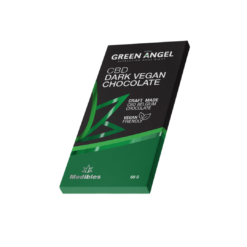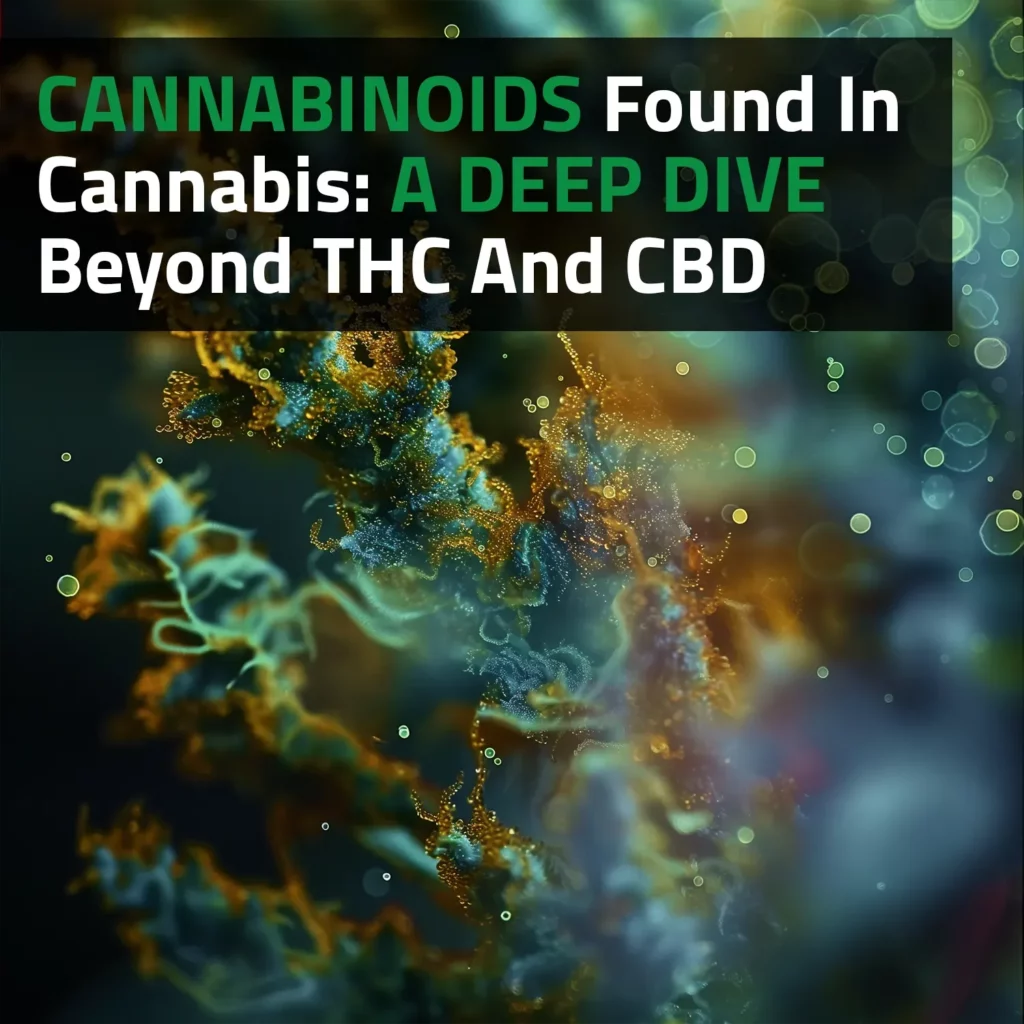Cannabis products vary widely in their effects, depending on the cannabinoid or blend used. While some THC cartridges can deliver an intense high, others might only provide a mild buzz. On the other hand, CBD and other non-intoxicating cannabinoids will not produce any high at all. For newcomers or those looking to refine their selection, understanding the different cannabinoids and their effects is crucial, as even weed pens can offer more than just a high.
Types Of THC And Cannabinoids
Cannabinoids can be categorised based on their effects and origins: psychoactive or non-psychoactive, active or inactive, and natural or artificial. It’s important to remember that even lab-produced cannabinoids can be considered naturally derived if they originate from the cannabis plant.
Psychoactive Cannabinoids
Psychoactive cannabinoids interact with the body’s CB1 receptors to produce a high. The intensity of this effect can vary significantly. For example, cannabinoids like CBN might not deliver a strong high, while delta-9 THC can achieve noticeable effects with relatively small doses.
Factors such as chemical structure, user tolerance, and genetics play a role in how these cannabinoids affect individuals. Moreover, there might be a limit to how high you can get as the excessive stimulation of CB1 receptors may not be fully processed.
Non-Psychoactive Cannabinoids
Non-psychoactive cannabinoids have minimal affinity for CB1 and CB2 receptors, so they will not produce a high. However, cannabinoids like CBD and its derivatives can offer substantial therapeutic benefits. These cannabinoids can still affect the nervous system and cross the blood-brain barrier, interacting with transient receptor potential (TRP) channels to produce various effects without intoxication.
Active Cannabinoids
Active cannabinoids are those that have undergone decarboxylation, a process where an acidic carboxyl group is removed, making them biologically or pharmacologically active. This transformation improves their chemical stability and alters their effects. While THC is an example of an active cannabinoid that can be psychoactive, other active cannabinoids like CBD and CBG do not induce euphoria but still interact with CB1 and CB2 receptors.
Inactive Cannabinoids
Inactive cannabinoids are those that have not yet undergone decarboxylation. These cannabinoids are less stable and are often precursors to active cannabinoids. They can still have effects on the body but require heat or ageing to convert into their active forms. For instance, THCA, CBDA, and CBGA convert into active cannabinoids when heated, a common process in the production of vape oils and edibles.
Phytocannabinoids
Phytocannabinoids are naturally occurring cannabinoids produced directly by the cannabis plant. These can be primary cannabinoids like THC and CBD or trace cannabinoids present in smaller amounts. Some trace cannabinoids are commercially manipulated from more abundant ones, such as CBD being converted into delta-8 THC or HHC..
Artificial Cannabinoids
Artificial cannabinoids are synthetic and do not occur naturally in cannabis. These substances are not produced by the plant. These are typically illegal as they are viewed as a form of designer drugs and are not regulated for safety and purity.
Cannabinoid Profiles And Their Effects
Each cannabinoid found in the cannabis plant has its own effects and benefits. Some of the most common cannabinoids found in cannabis include:
- CBD (Cannabidiol)
- CBDA (Cannabidiolic Acid)
- CBDV (Cannabidivarin)
- CBG (Cannabigerol)
- Delta 6 THC
- Delta 8 THC
- Delta 10 THC
- THCA (Tetrahydrocannabinolic Acid)
- THC-B (Tetrahydrocannabutol)
- THCC (Tetrahydrocannabiorcol)
- THC-H (Tetrahydrocannabihexol)
- THC-JD (Tetrahydrocannabijadrol)
- THC-O (THC-O-Acetate)
- THCM (Tetrahydrocannabimethanol)
- THCP (Tetrahydrocannabiphorol)
- THCV (Tetrahydrocannabivarin)
CBD (Cannabidiol)
CBD is the primary cannabinoid found in hemp. Unlike THC, CBD is non-intoxicating and does not directly bind to CB1 and CB2 receptors. Instead, it affects these receptors indirectly, leading to its widespread use for relaxation, stress relief, and pain management. Research suggests CBD may have therapeutic benefits, including seizure reduction, inflammation management, and neuroprotection.
-
 Green Angel CBD Vegan ChocolateR85.00Rated 5.00 out of 5 based on 1 customer rating
Green Angel CBD Vegan ChocolateR85.00Rated 5.00 out of 5 based on 1 customer rating -
 Zootly CBD Bon Bons (50mg)R70.00
Zootly CBD Bon Bons (50mg)R70.00 -
 Zootly CBD Jellies Jar – Sour Apple (60mg)R135.00
Zootly CBD Jellies Jar – Sour Apple (60mg)R135.00 -
 Zootly CBD Fudge (20mg)R40.00
Zootly CBD Fudge (20mg)R40.00
CBDA (Cannabidiolic Acid)
CBDA is the non-psychoactive precursor to CBD. When exposed to heat or oxygen, CBDA loses its carboxyl group, converting into CBD. Young, unprocessed hemp buds contain higher levels of CBDA compared to CBD. The effects of CBDA are believed to be similar to those of CBD, with both showing promise as anticonvulsants. However, CBDA may be more effective in preventing acute nausea, while being slightly less effective in reducing inflammation.
CBDV (Cannabidivarin)
CBDV is chemically similar to CBD but with a slightly shorter carbon tail, often referred to as the “varin form” of CBD. Research from the late 2010s to early 2020s indicates that CBDV may help prevent or reduce seizures in individuals with Rett Syndrome. It may also alleviate symptoms of nausea and irritable bowel disease (IBD). While its recreational effects are not fully understood, users report that CBDV helps them clear their minds and enhance focus.
CBG (Cannabigerol)
CBG is the active form of CBGA and is most abundant in cannabis before the plant reaches maturity. As the plant ages, CBG is typically converted into THC or CBD. CBG acts as a partial CB1 agonist and regulates endocannabinoid signalling without producing a high. It may offer medicinal benefits, such as stress and anxiety relief, chronic pain reduction, and improved sleep. Additionally, CBG shows promise as a neuroprotectant and anti-inflammatory agent.
Delta 6 THC
Delta 6 THC is an isomer of THC with a double bond located on the sixth carbon of its ring structure. This cannabinoid is often confused with delta 8 THC, which was previously known as delta 6 before a naming shift in the 1980s. Although research on delta 6 THC is limited, it is believed to be psychoactive, though less potent than delta 8 THC.
Delta 8 THC
Delta 8 THC is an isomer of THC with a double bond on the eighth carbon of its ring. It has gained popularity in the psychoactive hemp market for its milder effects compared to delta 9 THC. Delta 8 provides a functional, clear-headed high but can also induce lethargy or stronger effects at higher doses. It is also noted for its potential to reduce nausea and inflammation.
Delta 10 THC
Delta 10 THC is another THC isomer, with a double bond on the tenth carbon of its ring. It was discovered accidentally when bud contaminated with fire retardant during distillation produced delta 10-rich crystals. Although research on delta 10 THC is scarce, anecdotal evidence suggests it is psychoactive, typically offering a mild, sativa-like head buzz that is less intense than both delta 8 and delta 9 THC.
THCA (Tetrahydrocannabinolic Acid)
THCA is the acidic precursor to delta 9 THC. When exposed to heat, THCA converts rapidly into THC, making THCA products challenging to manufacture. THCA is non-psychoactive and does not bind to CB1 receptors. Users may consume THCA for its potential anti-inflammatory and neuroprotective benefits, or they may decarboxylate it to produce THC for psychoactive effects.
THC-B (Tetrahydrocannabutol)
THC-B is the butyl homolog of THC, structurally similar except for one fewer carbon atom in its tail. THC-B may have similar affinity for CB1 and CB2 receptors as delta 9 THC. Preliminary research suggests THC-B could inhibit the replication of the COVID-19 virus, outperforming other cannabinoids in this area. However, further studies are necessary to confirm these findings.
THCC (Tetrahydrocannabiorcol)
THCC is a trace cannabinoid found in cannabis pollen, primarily from non-flowering male plants. Discovered in the 1970s, THCC is non-psychoactive and activates the TRPA1 channel, which regulates protective responses like airway resistance and coughing. THCC could be valuable in developing future anti-inflammatory and analgesic therapies, though it is not yet available in consumer products.
THC-H (Tetrahydrocannabihexol)
THC-H is the hexyl homolog of THC, identified in 2020 by researchers who also discovered THCP. While it is believed to be psychoactive, little is known about THC-H’s potency or effects. Its six-carbon tail suggests high CB1 binding affinity, but claims about THC-H should be approached with caution due to the lack of conclusive research.
THC-JD (Tetrahydrocannabijadrol)
THC-JD is a cannabinoid that naturally occurs in cannabis, though there is also a synthetic version known as JWH-138. The natural form of THC-JD may have a strong CB1 binding affinity due to its eight-carbon tail, but research is lacking. The authenticity of commercial THC-JD products is questionable, as standard certificates of analysis (COAs) do not test for this cannabinoid.
THC-O (THC-O-Acetate)
THC-O is the acetate ester form of THC, known for its purported high potency and potential psychedelic effects. However, vaping THC-O is considered dangerous due to the risk of producing ketene, a harmful lung intoxicant, upon heating. While THC-O gummies and tinctures may be safer, all THC-O products are federally illegal according to the U.S. Drug Enforcement Administration (DEA).
THCM (Tetrahydrocannabimethanol)
THCM is the monomethyl ether form of THC, identified in marijuana smoke but never isolated. There is no information on THCM’s effects, and it is often confused with an unrelated stool test referred to as “THCM.” No high-THCM products are known to exist, and COAs do not test for this cannabinoid.
THCP (Tetrahydrocannabiphorol)
THCP is a trace cannabinoid structurally similar to delta 9 THC but with a longer side chain, giving it a potentially much higher CB1 binding affinity. Discovered by Italian researchers in 2019, THCP may be up to 33 times more potent than delta 9 THC, though this does not equate to getting 33 times as high. Pure THCP products are rare, with most available as blends in vape products, edibles, and tinctures.
THCV (Tetrahydrocannabivarin)
THCV is the varin homolog of THC, with a shorter side chain than THC. THCV’s effects depend on dosage and other cannabinoids consumed alongside it. At lower doses, it is around 25% as psychoactive as delta 9 THC and may act as an antagonist when combined with delta 9, potentially reducing its potency. THCV also shows promise as an antipsychotic, anticonvulsant, and appetite suppressant.
While THC and CBD are the most well-known cannabinoids, cannabis contains a vast array of other cannabinoids, each with unique properties and potential benefits. From the non-intoxicating CBDA and CBG, which offer therapeutic effects without the high, to the lesser-known but intriguing THCP and THC-O, the diverse cannabinoids found in cannabis hold promise for a range of applications. As research continues to uncover the effects of these compounds, understanding their individual characteristics will be key to unlocking the full potential of cannabis for both medical and recreational use.






